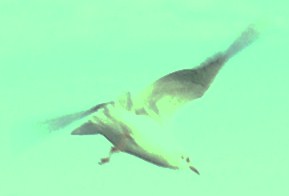 References to the city occur even in highly metaphorical fados; here, the intention seems not so much to describe or represent the city as to ground otherwise ‘universal’ material. An example can be found in a lyric written by Amália Rodrigues, in which she speaks of an ‘icy sea’ that enters her when her lover is absent and of being ‘um barco naufragado / Mesmo sem sair do Tejo’ [a boat shipwrecked / without even leaving the Tejo]. In another fado associated with Amália, Alexandre O’Neill’s ‘Gaivota’ [Seagull], we hear of a seagull that might come ‘trazer-me o céu de Lisboa’ [to bring me the Lisbon sky]. The success of this song, which has been recorded by a number of performers, has arguably strengthened the possibility of a metonymy utilized in many fados whereby the image of the ‘gaivota’ comes to stand in for Lisbon itself. The same can be said for the ‘Varinas’ mentioned in many older fados; these are female fish sellers famed for carrying their baskets of fish on their heads as they walked through the streets. Now more prevalent in songs than in reality, they are also hymned by mythologists such as Ángel Crespo.
References to the city occur even in highly metaphorical fados; here, the intention seems not so much to describe or represent the city as to ground otherwise ‘universal’ material. An example can be found in a lyric written by Amália Rodrigues, in which she speaks of an ‘icy sea’ that enters her when her lover is absent and of being ‘um barco naufragado / Mesmo sem sair do Tejo’ [a boat shipwrecked / without even leaving the Tejo]. In another fado associated with Amália, Alexandre O’Neill’s ‘Gaivota’ [Seagull], we hear of a seagull that might come ‘trazer-me o céu de Lisboa’ [to bring me the Lisbon sky]. The success of this song, which has been recorded by a number of performers, has arguably strengthened the possibility of a metonymy utilized in many fados whereby the image of the ‘gaivota’ comes to stand in for Lisbon itself. The same can be said for the ‘Varinas’ mentioned in many older fados; these are female fish sellers famed for carrying their baskets of fish on their heads as they walked through the streets. Now more prevalent in songs than in reality, they are also hymned by mythologists such as Ángel Crespo.
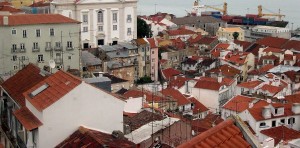
‘Gaivota’ also highlights the desire to move to a space where one can look down on the city. As Michel de Certeau and numerous cultural geographers have pointed out, the ‘God’s eye’ view of the city beloved of urban planners and readers of the city-as-text often mixes uneasily, and even antagonistically, with the lived text of the street level view. But that does not alter the fact that such a perspective remains a dseirable one, even in everyday life. It is, after all, what allows us to read the city and try to get a sense of what the city might mean. While it is true that the view from above is one which has power and authority attached to it, it is also a view that the city itself – in the form of the polis, the citizens – requests. There is a pleasure to viewpoints that allow a looking-back on the city text, which is why they are frequently included on tourist itineraries and prominently signposted from the ‘depths’ of the city itself.
Fado’s association with Alfama has allowed its songwriters not only to negotiate the dark alleyways and labyrinths of the quarter, but also to look down on the city and the river below. Hermínia Silva can thus sing of the ‘Telhados de Lisboa’ [Rooftops of Lisbon] and Tristão da Silva of the view ‘Da Janela do Meu Quarto’ [From the Window of My Room], from where he sees Alfama, the seven hills of Lisbon, the varinas, the cathedral and the Tejo.
Let’s return to ‘Gaivota’, a fine example of fado canção. Written by Alexandre O’Neill, set to music by Alain Oulman and recorded by Amália Rodrigues, the song became a twentieth century fado classic. Central to its appeal are the dense metaphorical language, the references to Lisbon (nothing too obsessive, just the sky above the city that allows us a view of its streets and the possibility to be carried away on the wind and over the sea), a maritime flavour, an aching longing at the heart of the refrain and Amália’s deep saudade-drenched voice. The song was both a culmination of all those seagulls that had provided part of the poetic language of fado and an inspiration to subsequent fados. In the 1970s, Carlos do Carmo lent his jazz-influenced phrasing to the song and it was reinvented, arguably becoming as much his as it was Amália’s.
In 1990, Carmo’s occasional collaborator Paulo de Carvalho included the song on his album Gostar de Ti, a pop-fado project that mixed state-of-the-art keyboard sounds with guitarra. In 1998 it became one of Lula Pena’s ‘phados’, a stark, almost-not-there exercise for husky voice and guitar haunted by the ghostly presence of Amália. In 2002, Gonçalo Salgueiro used the song to show his dedication to the Amálian event and to highlight his vocal ornamentation, while Carlos do Carmo sang a more unusual version than normal to the accompaniment of Joel Xavier’s inspired acoustic guitar improvisation. Margarida Bessa’s version from 1995, complete with tenor saxophone, turned up on Metro’s Café Portugal in 2004, one part of a jigsaw of songs making up that invisible city. Cristina Branco used ‘Gaivota’ as a homecoming at the close of her far-ranging album Ulisses. For the Quinteto Jazz de Lisboa and for Paula Oliveira and Bernardo Moreira it became once more an exercise in jazz singing, Oliveira providing an achingly fragile reading over Leo Tardin’s minimal piano that aimed for the song’s lonely heart. Then in 2009 ‘Gaivota’ was suddenly the focal point for a Number One album by Hoje, the project featuring members of pop band The Gift, whose Nuno Gonçalves wished to prove that ‘Amália is more than fado – Amália is pop’ (see the group’s MySpace page).
What to make of the nearly fifty year flight of this seagull? Does it tell us a story about fado or ‘only’ about Amália? Can the two be separated at this stage? Can ‘Gaivota’ tell us any more about what fado ‘is’? Does its arrangement determine its fado-ness? If so, does Carlos do Carmo stop being a fadista when accompanied by Joel Xavier? How does fado differ from other song genres? How does the commissioning of lyrics and arrangements affect authenticity in comparison to pop and rock? Was ‘Gaivota’ always a pop song, as Nuno Gonçalves claims? And what does it mean to claim, as Gonçalves does, that ‘pop’ is something bigger than ‘fado’? Hoje’s version soars and swoops, aiming for that place on high from where the lyric speaks and proving itself to be a song about singing, about fado and pop music: a self-aware object that escapes the drooping cadence. But which version can be said to be truer to the word and spirit of fado? The fact is that groups such as A Naifa, Donna Maria, OqueStrada and Hoje seem to climb to a place outside of fado. But this would suggest a music that ‘just is’ and a music that ‘gets outside’, which seems too neat. What are the elements within fado itself that make it seem ‘natural’, ‘transparent’?

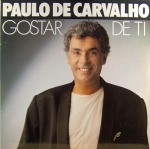

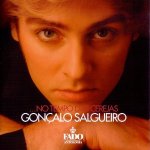

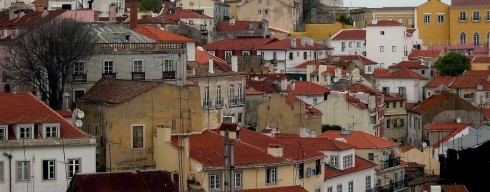
Could it be that Fado is a transcultural commodity? Or it seems to me that it was appropriated in that fashion.
Cf. “So Broken”, by Bjork, where she sings accompanied only by two Spanish guitars. How if flamenco natural, then? Is that song not flamenco?
In my opinion, this is partly due to singers that in a way transcend genres, like Amália. And the way she sang and performed was already a controversial reinterpretation of fado.
Again, thanks for your wonderful bog and publications.
Sincerely,
Ricardo
Hi Ricardo. Yes, transcultural but also highly local at the same time. In fado, musical style, lyrical preoccupation, performative gesture and much more are fenced-off, localised, territorialised, only to be simultaneously the very ingredients that allow fado to be exported to other cultural contexts, to have meanings in other times and places. As you imply, fado as ‘commodity’ is somthing that can be traded transculturally and perhaps it is those singers who, as you say, transcend genres that are best placed to trade the commodity in this fashion. That is, they are able to find the correspondences between local and global meanings. Perhaps, different cultural contexts notwithstanding, Amália differs from Bjork primarily in that, no matter how far she (Amália) travelled (physically, stylistically, in the popular imagination, etc.), she was destined to forever be associated with one genre (fado), whereas Bjork seems to signify mainly as someone who cannot be reduced to genre?
I agree with that, yes. And Bjork also sings in English.
A lot of fadistas will say that fado is only portuguese and can only be understood by us, for its historical and social elements are hard to decode by foreign audiences. And yet are those feelings associated with the genre not present in other nations and cultures?
So far, the only gesture I’ve seen of a definitive preoccupation with keeping fado local is tasca do Chico, where no word of English is spoken even though the majority of the people in the audience don’t speak Portuguese.
What I mean is that nationally there is a need to spread fado and make sure it becomes well known worldwide. At the same time, though, worry grows that it will be somehow contaminated and taken from us, so there are always local movements of preservation.
I just wonder what will happen when fado becomes world heritage. Is this status (or the world music market) always a safe haven or does it only bastardize folk things?
There is an appreciation of fado by Fernando Pessoa that I would like to share with you. Perhaps you came across this before. If not, perhaps you’ll find it interesting.
Well, in any case here it goes.
(you can find it online together with a bibliographical reference at http://arquivopessoa.net/textos/3345)
“O FADO E A ALMA PORTUGUESA
Toda a poesia – e a canção é uma poesia ajudada – reflecte o que a alma não tem. Por isso a canção dos povos tristes é alegre e a canção dos povos alegres é triste.
O fado, porém, não é alegre nem triste. É um episódio de intervalo. Formou-o a alma portuguesa quando não existia e desejava tudo sem ter força para o desejar.
As almas fortes atribuem tudo ao Destino; só os fracos confiam na vontade própria, porque ela não existe.
O fado é o cansaço da alma forte, o olhar de desprezo de Portugal ao Deus em que creu e também o abandonou.
No fado os Deuses regressam legítimos e longínquos. É esse o segredo sentido da figura de El-Rei D. Sebastião.”
Best regards